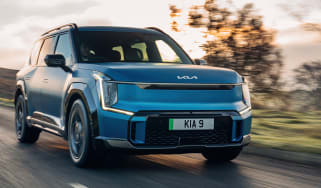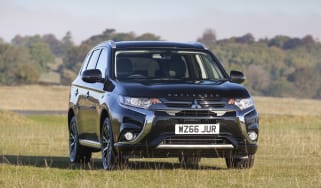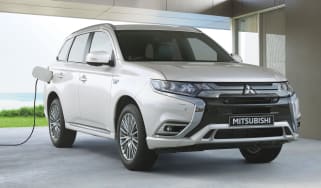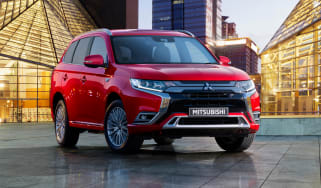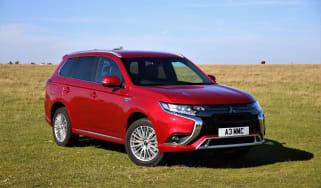Mitsubishi Outlander PHEV (2013-2021) review
Once the go-to choice for plug-in SUV fans, the Outlander PHEV is no longer available to buy new, as the brand has pulled out of the UK
Pros
- Affordable for a large plug-in SUV
- Pure-electric range of 28 miles
- A spacious family car
Cons
- Interior feels cheap
- Bland driving experience
- Better plug-in hybrids available
| Car type | Electric range | Fuel economy | CO2 emissions |
|---|---|---|---|
| Plug-in hybrid | 28 miles | 140mpg | 46g/km |
The Mitsubishi Outlander PHEV is still hailed as ‘revolutionary’ on the Japanese brand's website, but the truth is its star has faded. The biggest issue for potential buyers is that Mitsubishi will stop selling new cars in the UK from Autumn 2021, but even if that wasn’t the case, it would be hard to make a strong objective argument for the Outlander these days.
As the first plug-in hybrid SUV you could buy, the Mitsubishi was certainly a trendsetter. Given the popularity of SUVs in general, it’s no surprise Mitsubishi struck a rich seam of interest when it launched the model in 2013, and it swiftly became the world’s best-selling plug-in. Mitsubishi is leaving the UK just as the rest of the world gets an all-new version of the car, so age isn’t on the current Outlander’s side. It’s telling that the current model doesn’t make it onto our list of the top 10 best plug-in hybrids in 2021.
Where it once forged a lonely path, the Outlander now finds itself ranged against all manner of tempting plug-in SUV options, from the smaller MINI Countryman Cooper S E ALL4 to the Porsche Cayenne E-Hybrid at the other extreme. More direct competition comes from rivals such as the Ford Kuga Plug-In Hybrid, Peugeot 3008 Hybrid, Vauxhall Grandland X Hybrid and Toyota RAV4 Plug-In, to name but a few.
Given all the above, it’s not surprising that Mitsubishi is offering some pretty strong financial incentives on the Outlander PHEV this summer. There’s no government grant on plug-in hybrids any more, but a check of the website reveals the firm is offering discounts of up to £4,500 – taking the on-the-road price down to less than £32,000 for the entry-level Verve.
Company-car buyers do well, too, as 46g/km CO2 emissions mean low Benefit-in-Kind (BiK) tax, with worthwhile savings for buyers of plug-in hybrid models like the Outlander compared to a petrol or diesel equivalent.
The Outlander features a 2.4-litre, four-cylinder petrol engine with two electric motors – one on each axle – to deliver 28 miles of pure electric running. In electric mode, the Outlander drives with the typical smooth refinement of an electric car, and even when the petrol engine kicks in it’s quieter than a diesel. For all that, the automatic gearbox sometimes lets the engine rev higher than you may feel it needs to, and the handling is quite cumbersome. If you try to hustle it along with any sense of urgency you'll notice lots of sway in the corners and performance that’s only adequate at best.
There’s loads of space inside the big, bluff-looking Outlander. You’ll get three across the rear bench with relative ease, access is good for strapping kids in, and a driver of any size or shape should be able to get comfortable. There’s no seven-seat option in the PHEV, as there is in the petrol Outlander and rivals such as the Hyundai Santa Fe and Skoda Kodiaq. Competition is growing, too, with the Kia Sorento hybrid trumping the Outlander for space and low running costs.

Overall, the Mitsubishi Outlander PHEV remains one of the best-value big 4x4 plug-in hybrids you can buy, albeit one whose days are numbered. Just stick to the lower trim levels, as it really is hard to justify the £40,000-plus models. For more on the Mitsubishi Outlander PHEV, read on for the rest of our in-depth review...


